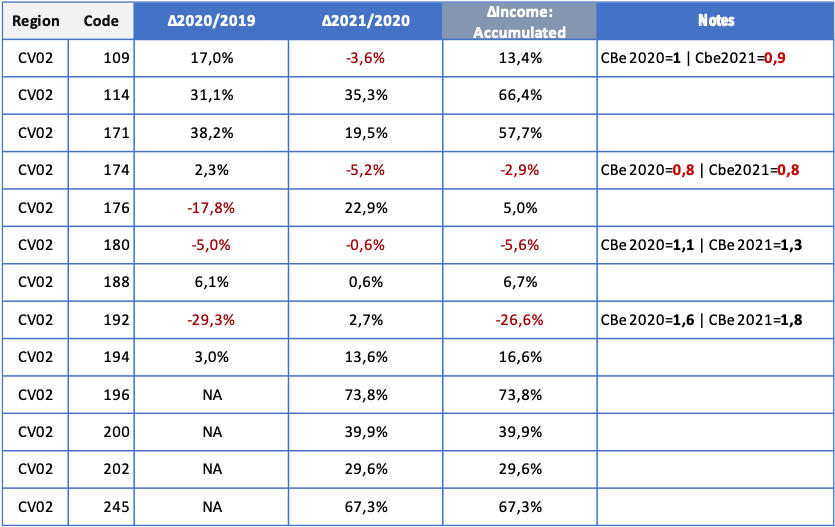Case Studies
The case studies listed on this page do not represent the totality of projects developed by the syncplexity team. The list represents those cases that have contributed most significantly to the development of the model.
The names of the companies have been omitted for confidentiality reasons.
| Early Stage — Organizational Development | ||||
|---|---|---|---|---|
| # | Location | Year | Business | Size/Staff |
| 1 | La Senia, Spain | 1996-1997 | Machining of wood components for the furniture industry | 40 Staff members |
| 2 | Benicarlo, Spain | 1997-1999 | Wooden furniture | 60 Staff members |
| 3 | Martorell, Spain | 2000-2001 | Motorbikes supplies assembly | 200 Staff members |
| Sustainable Viability | ||||
|---|---|---|---|---|
| # | Location | Year | Business | Size/Staff |
| 4 | Switzerland | 2001-2004 | The Swiss banking experience cannot be detailed for confidentiality reasons. However, it is fair to say that syncplexity's approach to prestige was profoundly enriched with the four projects conducted in Swiss banks. | |
| 5 | Mexico City | 2005-2007 | Printed folding boxes for packaging | 270 Staff members |
| 6 | Mexico City | 2007 | Automotive parts | 435 Staff members |
| 7 | Mexico City | 2008-2009 | White line products and anodized aluminum | 279 Staff members |
| 8 | Mexico City | 2010 | Phone carrier | 210 Involved employees |
| 9 | Mexico City | 2011 | Store network of miscellaneous retail sale (household) | 120 Involved employees |
| 10 | Mexico City | 2011-2012 | Industrial engineering | 29 Staff members |
| Expansive Emotional Influence | ||||
|---|---|---|---|---|
| # | Location | Year | Business | Size/Staff |
| 11 | Benicarlo, Spain | 2013-2015 | Real estate development and construction | 5 Management board |
| 12 | Madrid, Spain | 2016-2018 | Law firm; banking and finance division | 4 B&F division employees |
| 13 | Benicassim, Spain | 2017-2018 | Hotel & restaurants | 180 Staff members |
| 14 | Benicarlo, Spain | 2017-2020 | Retail and tourism-related businesses, marketplace | 37 Establishments |
| 15 | Alcoi, Spain | 2018-2020 | Food market | 12 Management board 30 Establishments & 59 People involved. |
| 16 | La Rapita, Spain | 2019-Present | Retail businesses | 17 Establishments & 19 people involved |
| 17 | Alcoi, Spain | 2019-Present | Retail businesses | 48 Establishments & 106 Peple involved |
| #1 Company Reference |
|---|
| La Senia, Spain, 1996-1997 Machining of wood components for the furniture industry 40 Staff members |
| Abstract |
| Situation After the acquisition of very sophisticated machinery, the problem was not solved but rather worsened. The one customer dependence caused an untenable situation when, despite the significant investment in the latest technology in productivity for the wood manufacturing industry, the company could not deliver the main customer's orders on time. The poor profitability for years made a new investment in additional machinery unfeasible. Strategic Approach The strategic approach was to develop people's potential through leadership and motivation. Around that primary axis, a manual production line was put into operation, operated by those motivated employees. The challenge of this approach was to develop true leadership qualities in a short period of time when the foundations for this were non-existent. Key Results |
| #2 Company Reference |
|---|
| Benicarlo, Spain, 1997-1999 Wooden furniture 60 Staff members |
| Abstract |
| Situation The company was the only one dedicated to the production of bentwood products in the Spanish market. That market position brought huge profits. However, It was necessary to recover the company from an awful business position after an associate left the company with all the sensitive information and gained most of the customer portfolio (around 80%) by creating his own company and reducing prices significantly. Strategic Approach The strategy to recover the market loss was founded on an integral cost management, followed by a comprehensive deployment of the principles of both the total quality management and a practical application of the ethics of honesty. Key Results |
| #3 Company Reference |
|---|
| Martorell, Spain, 2000-2001 Motorbikes supplies assembly 200 Staff members |
| Abstract |
| Situation In December 1999, the company was a model company in the subcontracting of sectors such as automotive (Honda, Yamaha) and consumer electronics (HP). The commercial activity was not considered necessary because, since its foundation in March 1991, it had enjoyed a good reputation in its industry. From a small artisan workshop with two employees (current managers), its growth had been based on customer satisfaction. In the area of assembly subcontracting, this company was the reference in the sector. Even so, the company entered into a severe insolvency situation. The cost analysis clarified that both sales prices and revenue volume were correct and sufficient to end the year with a profit. Even so, employees entered the third consecutive month without being paid. Suppliers were in the same situation. The imminent danger was not a drop in employee performance, but that the suppliers would stop supplying parts and, therefore, the contract with the main customer (Honda) could not be fulfilled. The decision was tough: with the money available, should the banks be paid (2 months without meeting financial obligations), the employees or the suppliers? Furthermore, Honda complained about the delay in the delivery of some series of orders. They were told that more employees had been hired than the contract had called for. Honda replied that this was impossible, insinuating that the performance of the employees had dropped because they had not been paid for months. Several discussions ensued with no apparent end in sight. It was decided that a Honda employee would go to the company's plant for some time to time, observe and collaborate in everything necessary to detect and solve the problem. Days went by, and nothing abnormal was noticed—quite the contrary. On the contrary, with the implementation of new production and organizational techniques, employee performance improved dramatically. How was it possible: with productivity per employee above the standards set by Honda-Japan, with prices under control in all areas, how was it possible? Strategic Approach Faced with this situation and having appreciated the financial position of the company, a final step was taken: To dispense with the planning delivered by Honda and to make one of its own that, as an objective, would respect the assembled units that Honda needed each month. Within a few weeks, the information derived from the new system made it possible to detect the root of the problem. Honda accepted the conclusions, so everything was solved. However, at the end of April, the difficulties continued because, in reality, the weekly production plans were also altered according to the final demand Honda had at any given time. Key Results - After 12 months |
| Mexico City, Mexico, 2005-2012 Inductries: Printed folding boxes for packaging, automotive parts, white line products and anodized aluminum, phone carrier, store network of miscellaneous retail sale (household), and industrial engineering. People involved: 1,343. The six major case studies conducted from 2005 to 2012 in Mexico City are presented as one because, although they were from different industries, they were similar in the core aspects of competitiveness. | |
| Abstract | |
| Starting Point In 2005, when the model based on the principles of Sustainable Viability1 landed in Mexico City, was a well- tested solution for many companies that struggled to compete in Europe and the US. Initially, it was assumed that something that worked in the most advanced economic contexts would also be useful in a not-so-demanding market. This approach was a mistake from the very first moment. On the contrary, the lack of essential ingredients for competitiveness must be replaced by models able to produce what is needed but with much fewer ingredients. Therefore, far from being just a nice experience, the Mexican stage becomes fundamental to understanding the parameters of hypercompetitive contexts. Certainly, a model based on the principles of Total Quality Management could be helpful, somehow. However, the best of the models is useless without leaders, or even worse, the driving forces of the context are going in the opposite direction to the necessary. With small (not to say none) chances of having a committed workforce,2 no training program could work. Therefore, with neither leaders nor committed employees, thinking about quality was not an option. Nonetheless, the critical issue was that most of the medium-large sized Mexican companies work for customers abroad, which expect the highest standards in quality. In that context, the possibilities of creating added value were certainly scarce, beyond the country-wise strategy of being a low-cost factory. This approach led to consequently low salaries, and the unavoidable constant feedback of the vicious loop of poor-quality products and dissatisfied customers. | 1 The Sustainable Viability was the methodology developed by Mr. Alzamora and his team. 2 In most of the case studies summarized in this article, labor turnover was above 100% yearly. |
|
Development of People’s Executiveness The first objective was to revise the implementation procedures, so instead of providing knowledge on leadership, actual leaders would be the outcome. The challenge was overwhelming because there were no references available to be contrasted with the individual conceptions of the subject, and results were required in a matter of a few months. Considering that principles or beliefs shape a person’s vision, the absence of something to be compared with has to be replaced by a particular development of individual’s logic. From that assumption, the Sustainable Viability proposal was re-shaped to support the development of people’s profiles for precise results. That was the origin of the executiveness approach. Project after project, the team constantly improved both the matrix of behaviors that were needed to create the proper leadership vision and the process to ensure that those behaviors were adopted to a sufficient degree and with the necessary consistency to generate the intended effect: to induce pride in the employees so that they would be intensely committed to the training and improvement programs that needed to be deployed to achieve the quality standards that the customers demanded. Substantiveness As is to be expected, as much as demanding it was “creating” leaders and coherent business contexts in a short time, other matters had to be addressed. Besides evoking a feeling of pride in their employees, companies had to straighten out a dire situation, filling the generated added value gap. The pricing policies based on shrinking trade margins were not sustainable anymore. Among other reasons, depleting profit margins directly impacted wages, which were unable to reach a minimum level of dignity. Consequently, the effort to make people feel proud of their companies and jobs could be entirely wasted. On the other hand, raising salaries could kill the competitiveness achieved by cutting prices. Therefore, the way out of this perverse cycle was generating added value enough to go beyond low-pricing strategies, which was a change of transcendental magnitude in that social context. |
 Figure 1: Outline of the result-achievement process. |
|
Broad Listening The first step was to revise the very concept of selling, which led to the need to manage emotions and emotional bonding as the core concepts of the sales strategy because such is the nature (affective, emotional) of customer preferences. The result of that work was the developing of a specific method named Synchrony. The core of Synchrony was the revision of the listening process, taking a holistic approach to it (broad listening,) which led to considering the process from two sets of defining characteristics: listening, and trust. Hence, it was possible to determine the level of broad listening through a mathematical formula. Henceforth, intensive training programs were conducted in order to learn how to manage both sides of the process. As broad listening training programs were advancing, the companies' ability to understand their customers' real desires (expectations) and not just their needs grew exponentially. This work revealed that the higher the indicator, the greater the emotional intensity of the expectations obtained from the clients. Consequently, the features offered to customers (utilities) also had a more intense appealing charge. Furthermore, besides that critical outcome, another positive collateral effect was observed: sales increased as customers felt “authentically “ listened. In the middle of the Mexican Stage, a well-tested emotional perception scale was available, as well as a profound knowledge of the actual potential of the broad listening process. Therefore, companies could offer value far beyond low prices3 so the perverse cycle of low prices equals low quality could be broken. Conclusion—Results The focus on both “building leaders” and “developing substantiveness” was powerful enough to correct serious, deeply rooted issues such as:
The confronted situations were particularly significant, given that the severity of the situation could reach incomprehensible levels since almost all the circumstances described above were present in nearly all the projects. As a consequence, all cases presented situations of persistent economic bankruptcy, which had not terminate the business activity because, in the end, wages below the level of dignity corrected the deviation. |

Table 1: Structure of the broad listening indicator.  Figure 2: The Emotional Perception Scale. 3 The offerings based on customer expectations and not just needs were qualified as substantive; this is why the process is known as substantiveness. |
| #11 Company Reference | |
|---|---|
| Benicarló, Spain, 2013-2015 Housing development & real estate company 5 team members Around 90 construction workers before the 2008 World Crisis | |
| Abstract | |
| Starting Point The financial condition of any housing development company at the end of 2013 in Spain was utterly catastrophic. Those that had not disappeared were bankrupt or very close to it. Not a single crane was lifting materials to build anything. The banking crisis had dragged many economic sectors, especially the construction industry, into ruin. In that context, a family-owned housing development and real estate company had lost all hope of being able to save the company from bankruptcy. Bank debt was unaffordable, and the government subsidies granted for social housing construction had been lost. Needless to say, not a sign of a single customer anywhere. Therefore, the newly built and fully equipped 235-apartment housing development remained untouched, without a single family living there. Besides, the dwellings that remained to be sold (35%) in another development were in the same situation, even though their location was less than 100 meters from the beach in a very tourist destination on the Levantine coast (Benicarló-Peníscola). In that context, the business owner faced an unsolvable situation in which the only feasible option was to declare the company insolvent and give it all up for lost. However, hearsay brought the business owner a chance. Someone with a “peculiar” methodology was nearby and it could be a chance to refloat the company. Strategic Approach With no cash, zero possibility of bank credit, a huge debt that could not be dealt with, and a disruptively collapsed market with no customers in which the alleged partners (banking sector) had become the most formidable competitors, the strategic key used was the development of "emotional energy focused on prestige." Nonetheless, the source of emotional energy, which is people, was depleted and out of hope. Hence, the very first step was to make the management team believe that the business had an opportunity, which could only be reached if they became a “powerful engine of positive emotional energy.” However, the emotional challenge was not the only approach. Selling (assuming it was possible) without a profit would make it impossible to repay the financial debt and, therefore, the entire effort would be useless. But construction in Spain during the years of the "real estate bubble" was carried out with no expense spared. Now, with a market without customers nor the possibility of financing, how could dwellings be sold while covering costs corresponding to a totally gone economic model? Will emotion management be enough? | |
|
Let’s do it! The first premise was to create a profound awareness that emotion management does not have shortcuts. It is, in the end, energy, which cannot be deceived. In other words, the company managers were compelled to generate truly authentic positive mental dynamics by converting pessimistic habits and thoughts into positive ones. It will be easy to understand that, in the context before described, this can be considered as the “mother of all challenges.” The situations that put the strategy to the test were countless, though an example may be illustrative enough. Imagine month after month telling the banks “we cannot pay,” not even the smallest expenses while working, day after day, on managing individual behaviors. Meanwhile, not a sign of any customer. Unexpectedly, a customer enters the office. Of course, everyone in the team gazing at him, which create a dense atmosphere; not the ideal to sell anything, much less a house. When the interaction came to the point of telling the price, the reaction was withering: -What are you thinking, guys! With the crisis and you with these prices... Of course, the customer marched away outraged, hurling expletives. After such a situation, the normal team’s reaction could be to abandon any expectation of success. On the contrary, the team members redoubled their efforts to adopt habits and behaviors1 that would generate genuine trust, allowing them to know the expectations2 of the few customers who were likely to come in. Any desire to sell was abandoned and replaced by a genuine effort to listen broadly3 and profoundly to customers. The First Expectations Mapping The first mapping of prospective customers’ expectations permits to see clearly what they actually were expecting. Nevertheless, the dwellings were already built and equipped with no possibility for financing any kind of overhaul to adapt them to meet the recently known expectations. However, it was possible to tailor all interactions with potential customers to their expectations. So, according to the customer’s profile, it was decided which product to show and how to do it, taking care of the minor details that could impact the emotional perception. The subjacent principle was, in fact, pretty basic: creating a positive emotional impact from the very first moment, taking special care of those aspects directly related to the perception of trust, such as positive and balanced energy, mastering customer’s expectations although explained in their words, or focusing on listening to understand their expectations taking care of having no intention to sell. Transforming the Context One year later, despite the tremendous effort made by the team members to embrace emotional management, the mood in society was deeply pessimistic. The question was: What can we do if people fear economic conditions? The answer to that question was quite bold: Let’s help people to face the hostile economic atmosphere. And this is how the first competitiveness program for local retailers began, thereby increasing the amount and intensity of positive emotional energy in the context. Conclusion—Results On December, 2015 a period of extraordinary complexity in every sense came to an end. All the difficulties, which no one knew how to face, taught us some important things. First, that complexity is only a matter of perspective since now, with the housing of one development almost entirely sold -with the expected profit margin- and with more than 80% of the other development rented - at the price anticipated prior to the financial crisis-, what seemed impossible was only impossible because the way to deal with it was unknown. The second conclusion is that prolonged exposure to continued intense emotional exhaustion requires adequate recovery. Besides, from the perspective of the methodology employed to conduct this case,4 it was clear that adequately managed emotional energy is a powerful tool to face the severe conditions of hypercompetitive contexts whether they are generated by evolving market conditions or by the impact of unexpected crises. |
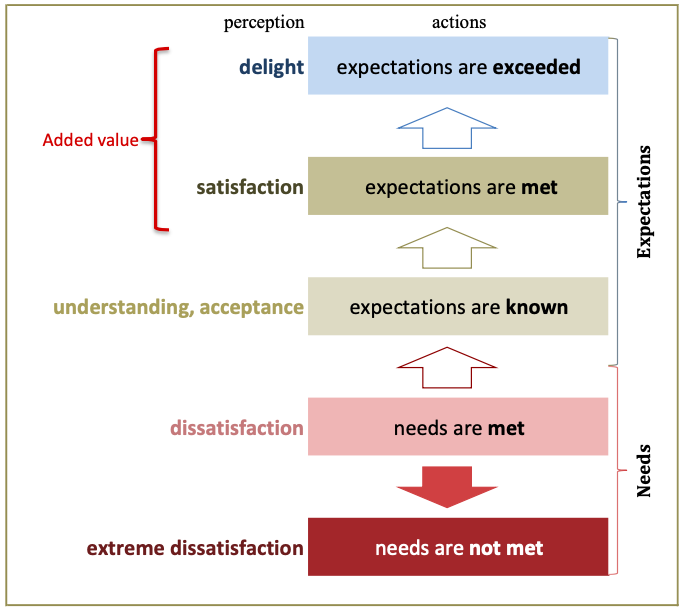 Figure 1: Emotional Perception Scale. 1 The Prestige Behavioral Matrix, which is the core of the Executiveness method suggested by syncplexity, was the foundation of emotional management. 2 The Emotional Perception Scale determined the key for the success of the strategy, by differentiating needs from expectations. 3 The broad listening process was performed in all its parameters. 4 The methodology used by syncplexity is the Expansive Emotional Influence. |
| #12 Company Reference | |
|---|---|
| Madrid, Spain, 2016-2018 Law firm; banking & finance division 4 Team members | |
| Abstract | |
| Starting Point The bank has the power in the banking law business, specializing in financing. It is the one who presents to the final client (the debtor) a list of possible law firms to hire. Finally, it is the recipient of the financing who chooses the law firm that will handle the operation. Although price is a determining factor in the client's decision, it is also true that trust is critical. This confidence is perceived in two specific aspects. First, the price offered is not subject to subsequent modifications. Secondly, the service provided by the firm has a robust quality and efficiency, not conditioned by the amount of remuneration. The conclusions that can be reached, after careful reflection, are as follows:
First Phase—Foundations The implementation of the Listen to Sell program in the firm’s banking division has to start with the expectations of its director, Abraham Nájera, which at the end of February 2016 are:
From these initial expectations of Mr. Nájera, it is necessary to involve the rest of his work group members, starting by presenting the project to them and listening to them to know their expectations. On April 8th, on the occasion of presenting the project to the Nájera's team, their expectations are known, ranging from "success" to "tranquility, as a basis for being at ease in all areas," to "stability as a basis for good development." The team members conclude that developing prestige will help them to meet their expectations. This conclusion ended on May 20th when the team decided they no longer wished to participate in the program. That is a challenging moment for Abraham, who wants the best possible development for them, but it further strengthens his conviction in the process. The work schedule is the next element to be considered for program development, starting with a four-hour per session structure. When a sufficient level of executability has been reached, as well as the availability of products with high added value, it will allow the work carried out to be materialized in tangible business results: progressive increase of the offer-acceptance ratio (oar). The work schedule foreseen to initiate the development of the program will be modified and adapted to the dynamics of each moment in order to guarantee that the expected results are obtained. The consistent development of the elements of the Listening to Sell program should progressively lead to a twofold result: Fulfillment of the team’s expectations, and and increase in the offer-acceptance ratio. The starting point of this indicator is to be established for the banking law business on the basis of the following parameters:
Coherence is a fundamental element of a prestige model; to avoid its devastating antonym (incoherence), the decision-making process must be present throughout the development of the program. That aspect is especially true for the design of the strategy to be followed in order to achieve the expected results. Independently of this, the rest of the elements that integrate the program (productive balance, structure of collaborators, and flow of activities) must be reviewed and adapted to the specific circumstances of each moment. In that sense:
|
|
|
Executiveness—The development of the Executiveness Comprehensive Profile (ECP) is the central element of the program, as it is the one that will allow us to reach and progressively develop the influencing capacity needed to deploy the model of sustainable competitiveness based on prestige. The essence of the element with which we will develop the capacity to influence—emotional energy—, must be present throughout the program, starting with a precise location of emotions within the global environment of affective phenomena. The first block of this element will be aimed at understanding and adopting the fundamental behaviors of the ECP, which correspond to the individual level of executiveness. It is important to remember that the main characteristics of the learning curve for each new behavior are:
Once these process elements have been reviewed, the facilitators and Abraham's team reflect on the true human potential and the role of the leader-teacher in its development. The Enrique V case study is the tool used to carry out this dynamic. The central element of the integral executive profile is life purpose. It is, therefore, unquestionable that this is the place to start.
Based on this summary reflection on the purpose of life, Abraham Nájera's "journey" is prepared so that he can identify it. On July 1st, the first approach to Abraham's purpose in life is established, which is “fascinating sublimation.” From this point on, the identity that channels the object of influence begins to develop. From identifying the project leader's purpose (fascinating sublimation), the development of the Identity Matrix begins. Customer Expectations—In the first week of July, with the adoption of the first behaviors of the integral executive profile, the Perception Map begins to be deployed. To this end, a round of contacts with already known clients is initiated so that we can start to learn about their needs-expectations. Second Phase—Robust Contracts The analysis of the legal sector in Spain during the First Phase of this program allows us to identify several trends. The first is that two opposing forces are fighting for space: the desire for high-service remuneration versus a more significant number of increasingly qualified lawyers. The second reality is that clients expect increasingly integrated services that facilitate their business processes to the greatest extent possible. There is a growing trend towards "integrated multidisciplinary processes." The third is that globalization also affects the business model of the legal profession. Better, more efficient, and simplified services are becoming more common in the offer to clients, which is not limited to the scope of national borders. The synthesis of these three realities of today's legal market leads to the conclusion that it is necessary to:
Both conclusions imply that less time should be spent on repetitive work. After a thorough reflection of the above realities and conclusions, it was decided to focus this second scenario on the "development of a computer system (application) that allows elaborating the different types of contracts in the Banking and Finance area in an automated and error-free way." Of course, an essential part of the agenda will also be devoted to listening to customers in order to get to know their expectations. |
The term executiveness is understood in the context of the competitiveness program as “the ability to assume the responsibilities inherent to the behaviors to be adopted in order to obtain specific results." Executiveness analysis— As a starting point for developing the team's ability to influence, an analysis of the team's ability to influence is carried out before the deployment of the integral executive profile begins. In this initial phase, the assessment focuses only on level 1 (Individual) of the profile. By the end of October, the four essential criteria of the matrix are defined. From this point on, Abraham's team begins to develop the process of integrating each of the essential criteria into their business description.  Table 1: Najera's Identity Matrix |
|
Software Application—The preparation of contracts in the Banking and Finance area has different characteristics, depending on the management type (refinancing, real estate financing, etc.). Therefore, developing a software application that allows automated editing of the different types of contracts should be the final result. The start has to be the design of a specific application for each type of contract. Keeping in mind the final objective of developing a global editor, the analysis made for each type of contract must contemplate the integration of all those similar procedures, regardless of the type of contract being worked on. The second aspect to consider is that it is a law firm. Therefore, the development of its added value has to be focused on the application's functionalities rather than the IT aspects. To this end, a strong alliance with recognized IT experts must be established from the outset. This alliance must guarantee at least two elements. The first is the use of state-of-the-art technology. It is more than likely that customers will end up interacting with the application in some of its practical functions. Working with technologies that are not the most advanced would damage the effort to acquire progressive prestige in the market, given the perceptual enhancement effect of the comparison with "the best." In other words, if the customer is using applications for his daily work that are well designed and efficient, as well as comfortable and pleasant, the fact that our application does not have these same attributes would generate a perception contrary to the process of prestige. The second element that must guarantee the alliance with computer experts is the quality of the work. An application that is not fully functional and robust, devoid of operating errors, should be discarded for the reasons given above. Mapping Expectations—Even though increasing productivity is the central focus of the scenario, listening to customers to determine their expectations is an essential and cross-cutting element of the entire project. To this end, the project team decided to establish a round of individualized meetings with one or two clients/prescribers per week until the end of the year so that the firm’s Perception Map can begin to be drawn up. By the end of December, a first view of the Perception Map is already available, allowing some preliminary conclusions to be drawn. The first expectations is “empathic diligence,” which means the ability to efficiently manage the process - services are provided with precision, according to their nature (e.g., accounting must always balance) - without losing focus on the purpose of the process and knowing/meeting the real needs of the service recipient or their specific circumstances. The second expectation is “recognized specialization.” The third one is “solve risks.” The conclusion reached by the team is that the top three priorities for the client-prescribers, as a whole, are:
Results—At the end of 2018, the income grew a 10% compared to the average of the previous eight years and 5 times in 2017. Besides the financial result, Mr. Nájera was congratulated by the firm's ownership for the management of his team. In 2019 he was invited to become a partner in the firm. |
The development of an efficient software application must respect a series of steps guaranteeing its functionality and robustness. The first of these steps is the differentiation between the analysis and design/development phases (alpha and beta) and end users' use. The second aspect is the sequence of these phases:
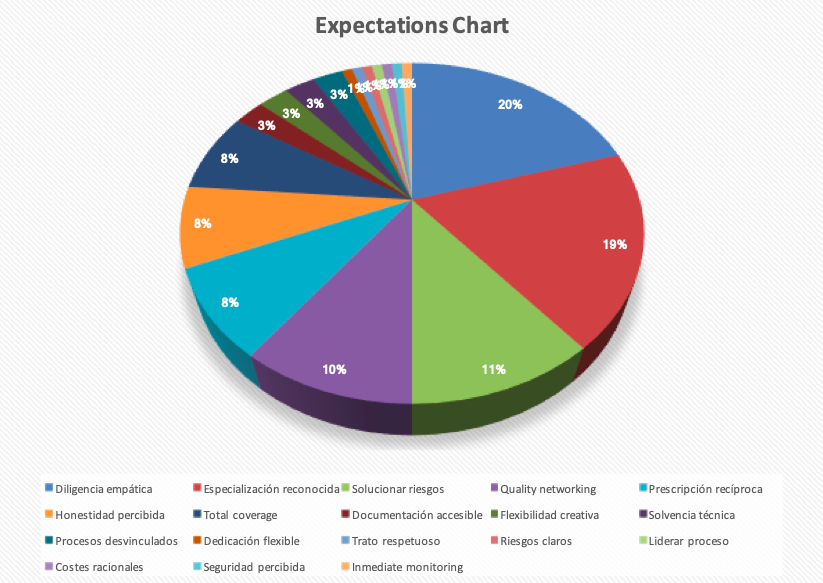 Figure 1: Chart of expectations analyzed. |
| #13 Company Reference |
|---|
| Grupo Voramar, Benicassim, Spain, 2017-2018 Hotel & restaurants 180 Staff members |
| Abstract |
| Starting Point The name "Voramar," based in the town of Benicàssim (Castellón), has a recognized reputation in the region (4th generation) in the hospitality industry. The flagship of the group, directed by Rafael Pallarés, is the Hotel Voramar, located in an absolutely privileged location on the seafront. Next to this main business, which includes a cafeteria and a restaurant, is the cafeteria-restaurant El Torreón, located on the same seafront promenade of Benicàssim. The assets described -consolidated reputation and privileged location- together with a constant effort to professionalize management, mean that, at the end of 2016, Grupo Voramar is in a business situation of considerable well-being. However, the managers are aware that more than the current management, based on the business processes, is needed to face future challenges, mainly represented by an increasingly developed competition. Voramar Group managers are also aware that improving competitiveness must be achieved by reinforcing the humanistic approach to management. In this sense, there is a clear awareness that, as a consequence of its deficiencies in this area, there are symptoms of severe internal division that can reduce its competitive capacity. To correct that situation, the managers of Grupo Voramar decided to work intensively on human development, with a particular focus on two areas: integrative leadership and the ability to generate emotional bonds with customers in a systemic way. First Phase Voramar's Management Team has decided to deploy a profound culture of prestige based on a complete model of organizational structure totally oriented to customers, where hierarchy gives way to the development of robust leadership and high-performance teams. To this end, the main lines of work will be the development of people's executive skills and coordinating the different areas of activity. In the first phase of work, the management team decided to focus on the business line of El Torreón, a cafeteria-restaurant belonging to the Voramar Group, so that those responsible for the organization could learn about the competitive model proposed by syncplexity (the Expansive Emotional Influence) and, depending on the level of satisfaction and results obtained, decide with more significant criteria its possible expansion to the rest of the group's business lines. The preparatory work sessions (Wednesdays of each week, from 14:00 to 19:00) give way (as of February 2017) to a more elaborate work schedule structure that, maintaining Wednesdays as the main day, is as follows:
The expected result at El Torreón is "the development of a greater capacity to influence all its employees" so that they can form more and better emotional bonds with customers. The primary areas of work will be the following:
Performance Leadership—The first phase to achieve leadership in performance consists of establishing the elements for developing organizational stability through the three factors on which it is structured: emotional, operational, and financial. El Torreón's financial stability will be managed by deploying an advanced corporate break-even model (CBe). Emotional stability will be managed by deploying a suitability map -level of attitude-based executiveness- of people concerning jobs. Finally, operational stability will be managed by deploying an integrated flow of activity (FIA), which will gradually disappear a hierarchical structure, giving way to a fully customer-oriented one. The efficient functioning of both the suitability map and the integrated flow of activity requires a progressive development of the executive skills of the company's personnel, which must begin with the example of its managers - the Executiveness program. Emotional management-based interaction— The first phase to achieve an interaction based on emotional management is to deploy:
Second Phase The results achieved in El Torreon encouraged the management team to extend the methodology used to all business lines of the Voramar Group. |
| #14 Company Reference | |
|---|---|
| Benicarlo & La Rapita, Spain, 2017-2020 Retail and tourism-related businesses, marketplace 37 Establishments | |
| Abstract | |
| Situation Until 2016, the syncplexity methodology (Expansive Emotional Influence) had been used in corporates and SMEs in different countries and business sectors but never in retail. The return of Josep Alzamora (creator of the methodology) to Spain at the end of 2012 made it possible to raise awareness of the methodology’s potential in environments severely hit by the 2008 financial crisis (see case study #13). In a context of deep economic depression for the retail trade, several local institutions decided to apply the model proposed by syncplexity. First, it was the city council of Benicarló (Mr. Alzamora's place of residence), followed by the Estacio Nautica Rapita (Rapita Marine Station, dedicated to promoting the tourism of La Rapita city). Thus, 2017 saw the start of the first syncplexity project dedicated to improving the competitiveness of the retail trade in the city of Benicarló. First step: Understanding the actors Although the Expansive Emotional Influence (EEI) methodology has been extensively and intensively tested, retail has specific idiosyncrasies and dynamics that need to be understood in order to guarantee the results expected from the model. Among all peculiarities, we may highlight the following: The above list must go on and on. However, something profoundly impacts many retail businesses in a way that is not perceived as severe, especially when it comes to family-owned businesses; we refer to family-work conciliation. It is quite common to find businesses that struggle to attend to their day-to-day business and family duties. Apart from a direct consequence, such as emotional exhaustion, the lack of time to develop tasks with a more strategic profile (such as advanced training courses) jeopardizes their ability to compete in the medium to long term. In the particular case of tourism, one more circumstance can be highlighted. That is the effect caused by the " yearly waves of abundance." Every year, during the tourist season, waves of customers arrive in regions with a special geographic attraction, bringing prosperity to local businesses, even though they make little effort to improve the service they provide to visitors eager for relaxation and fun. One of the direct consequences of this phenomenon is the difficulty in making the owners of these businesses see that, to transform them in the direction in which society is evolving, they must make an effort to change. Suddenly, an unforeseen crisis erupts, and they realize they have neglected to take care of potential customers locally and in the surrounding regions. Second step: Adapting the implementation protocols Insider knowledge of retail dynamics leads to the conclusion that the implementation of the EEI methodology has to be adapted in several aspects, such as: Simplicity—Broaden and elevate the business’ owners vision requires a profound revision of the Prestige Behavioral Matrix (PBM.) The personal change necessary for both the broad listening process and the influencing capacity that the model requires must be simplified in its content and deployment so that it is understandable to a wide range of sensibilities. Besides the revision of the PBM, it is necessary to simplify the implementation process. Specific tools—Most, if not all, SMEs have ERP systems that allow them to handle the necessary information management in a more or less solvent way. However, retail stores have POS (Point of Sale) systems that do little more than provide the obligatory sales receipt. Consequently, managing information that is critical to the viability of the business becomes a priority. In this process of adaptation to the new systems, we start from the premise that it is necessary to take advantage of the data sources already installed -where possible-so that the management of further information does not involve unbearable efforts. Third step: Facing the critical issue Once the protocols and tools needed to implement the Expansive Emotional Influence (EEI) methodology in retail have been adapted, it is time to address the most critical issue, such as the lack of substantiveness. In most cases, a store buys a product, stores and displays it, and sells it to customers. The problem is that customers' perception of the added value of this dynamic is inversely proportional to the development of online commerce (e-commerce.) Therefore, generating greater competitiveness in businesses is based on knowing the expectations of customers (not only their needs) and transforming them into highly appreciated services. The question is, can retail do that? How? Positivity, the great barrier Assuming that the difference between needs and expectations is understood, the next step is to enter the domain of proper emotional management since this is where customer expectations reside. In that sense, the first step is generating positive thinking and action, which is the commencement of building customer confidence. Beyond that point, expectations are at reach. The problem is that, although our rational thinking leads us to believe that we are positive people, the truth is that our habitual behavior as individuals is mainly negative. We envy, covet, hate, get angry for anything, and so forth; an endless etcetera of constant, daily attitudes, all of them of negative emotional polarity. However, this aspect of positive polarity is decisive since all the emotional qualities we need (e.g., trust, creativity) are of positive emotional sign. However, besides being essential, it is very difficult to achieve, since it implies changing most of individual habits. In any case, this has been the most decisive change for all the stores and small businesses that have adopted the approach proposed by syncplexity. Underperformed listening Once the need to consistently generate positive thoughts and habits has been understood, we can move on to the next stage: listening. People have a potent mechanism that allows them to know other person's expectations: the ability to listen. The problem is that most people do not know the whole process of listening and, moreover, cannot use it well even if they know it. But, although we try to look at this situation from a generous and constructive point of view, assuming that individuals can make an effort to understand and apply the whole process of listening, they will have a series of barriers that will prevent them from reaching the process’s full potential—understanding other’s expectations—. #1 Barrier—The first barrier to fully performing the listening process is to understand that it is precisely that, a process. As such, every step must be carried out properly so the process may deliver the outcome it is intended for. #2 Barrier—In its broadest sense, the listening process can facilitate the knowledge of a person’s expectations. However, such a high result requires equivalent effort. The first of these efforts consists of becoming aware that we are in an emotional environment since both the outcome (expectations) and the different steps of the process are emotional in nature. Accordingly, it will be necessary for the person who is managing the process to know and respect the principles of emotional management. One of the fundamentals of emotional management is that it is based on perceptual dynamics, not rational ones. Consequently, the person we interact with will respond to what they perceive and not what they hear; in other words, they will react to what we are but not to what we say. In this sense, the first thing the interlocutor from whom we want to know their expectations (customer) must perceive is trust. Therefore, the first behaviors to be adopted by the person who wishes to know the expectations of another are those that generate this perception of trust. From here on, assuming that we know what these trust-building behaviors are and that we are willing to adopt them, each step of the process will have specific requirements but also of an emotional nature. They will also imply a need to modify, to change, our behaviors. Lack of creativity In a society where everything related to the emotional area is massively explained and put into practice from a rational perspective, it requires an extraordinary effort to understand that we can no longer continue saying "trust me" but must generate a perception of trust. Having overcome this phase, which requires practically two years of hard work, the businesses participating in the competitiveness program face another difficulty: the lack of creativity, which is essential to convert the expectations gathered into substantiveness (appreciated features able to satisfy expectations.) The work of converting customer expectations into features deeply appreciated by them will require, similar to the listening process, qualities that will only be possible through specific personal habits, such as developing the capacity for abstraction. Beyond the skills related to the conversion of expectations into substantive benefits for customers, others are also fundamental, such as the ones required to give the offer of each business a unique character. Consumers are immersed in a sea of "commercialism," but this is not what they want. None of their expectations (or meta-expectations) have anything to do with a commercial attitude, which they find most of the time. Meeting expectations requires businesses run with the passion that serves to develop vocations. Otherwise, it is impossible to generate the perception of happiness and affective attraction they desire. Again, specific attitudes and behaviors are required. Results The results achieved by the businesses participating in the respective competitiveness programs can be summarized as follows: |
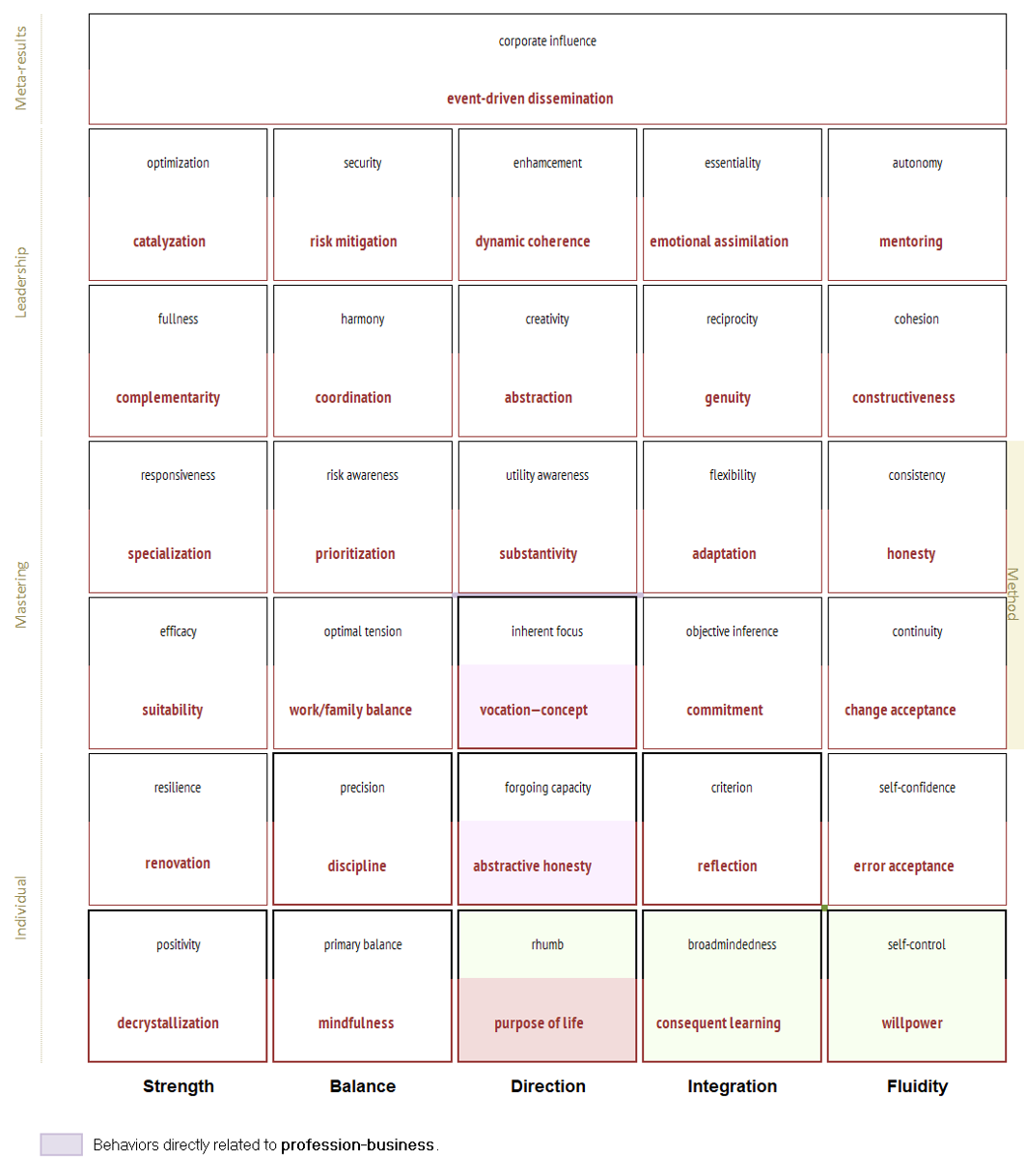 Figure 1: Prestige Behavioral Matrix. 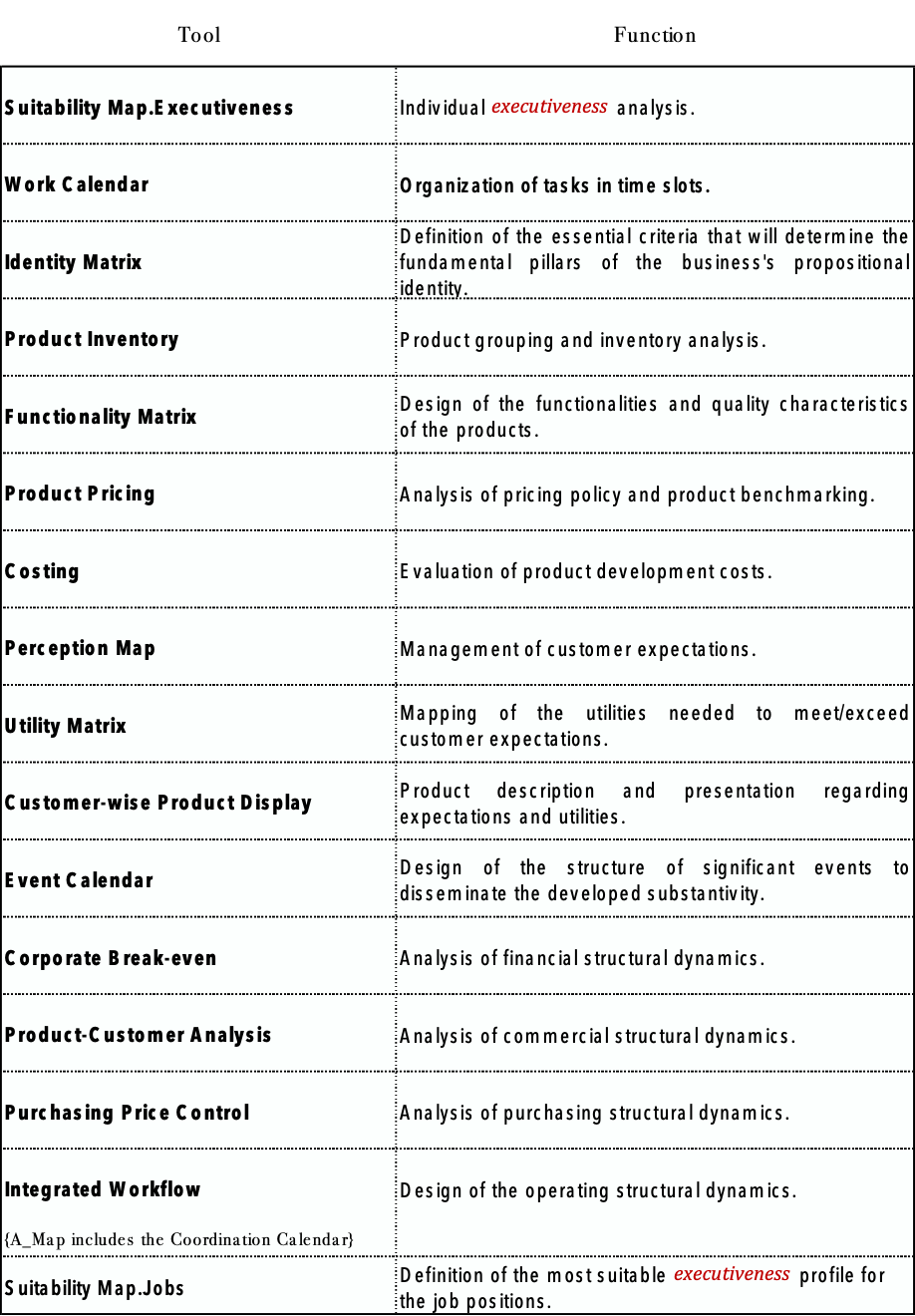 Table 1: Set of tools for retail business. 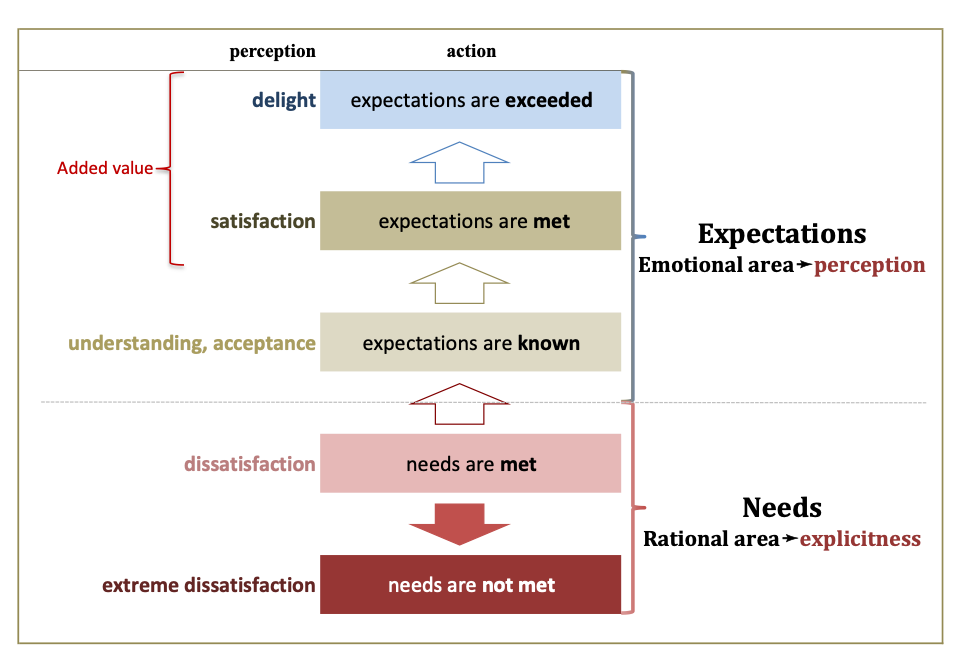 Figure 2: Emotional Perception Scale 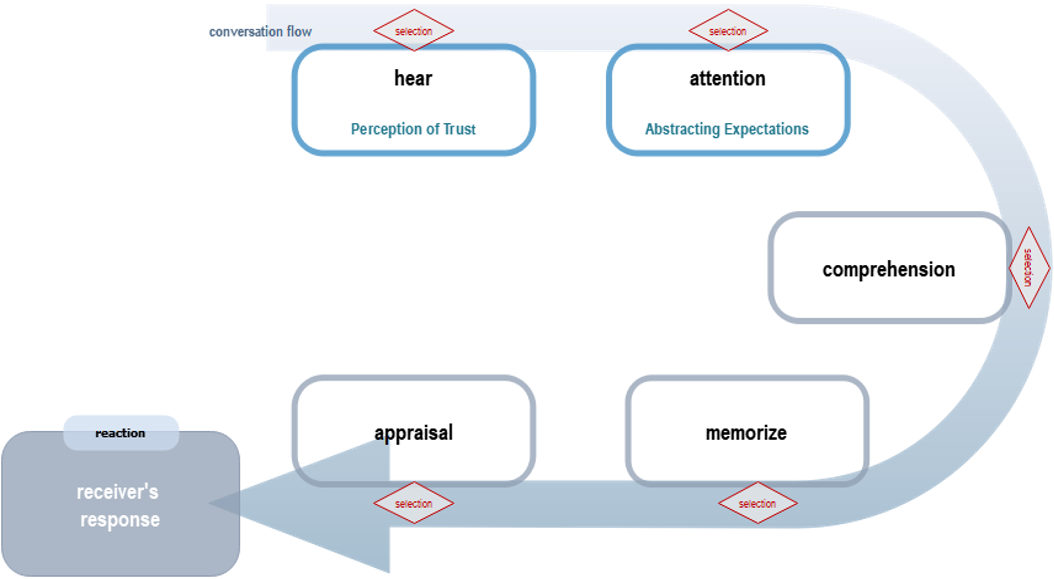 Figure 3: The broad listening process. 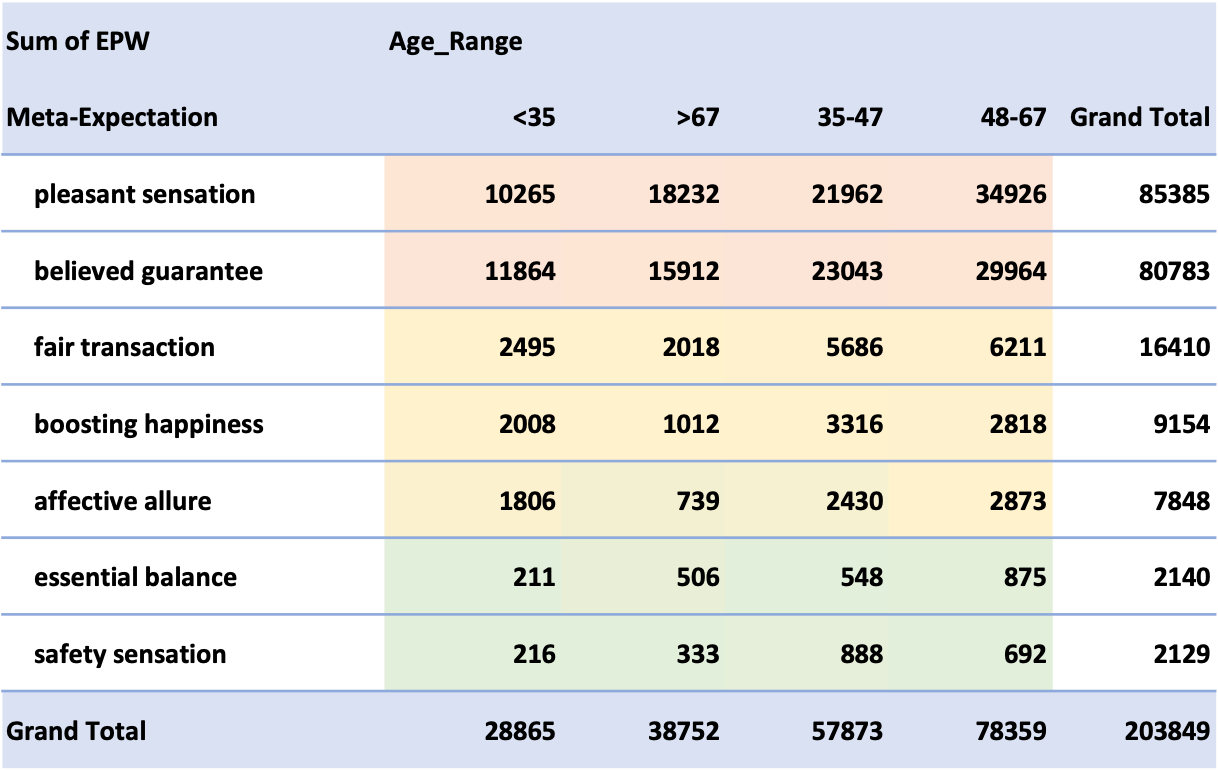 Table 2: Summary of meta-expectations per age range. |
| #15 Company Reference | |
|---|---|
| Alcoi, Spain, 2018-2020 Food market 12 Management board 30 Establishments & 59 People involved. | |
| Abstract | |
| Situation The situation of Mercat Sant Roc (MSR; Alcoy, Alicante) at the beginning of 2018, in terms of competitiveness, can be summarized in the following points:
First Phase 2018-2019 Initial efforts focused on:
|
Due to a general lack of statistical work, MSR brand acceptance among 35-47-year-old consumers had to be deduced by perception at the beginning. |
By the end of 2019, it was achieved:
Second Phase 2020 MSR's efforts to structure and develop the Cistella product and business lines are cut short by the nationwide lockdown resulting from the COVID pandemic. This containment, which begins in mid-March 2020 and runs through the end of May, immediately affects the MSR of collapsing home delivery service during the first week of containment. Delivery volumes 3 to 4 times higher than usual become unmanageable due to the lack of an adequate IT structure, material resources, and clearly defined processes. The first decision in this situation is not to close the service and devote all energies and resources to develop, in the shortest possible time, a team and a process capable of supporting the volume of home deliveries to be handled. With the implementation of the new home delivery process - known as tuduc - it became evident from the number of calls from dissatisfied customers that the level of delivery failures was totally unacceptable. An average of 35% of failures in the last weeks of April and the first weeks of May generated an excessive level of dissatisfaction among customers using the service. Once an operational team and process were structured, the next step was to work on the consistent reduction of failures. At the end of November, the result was a halving of failures (18%). | 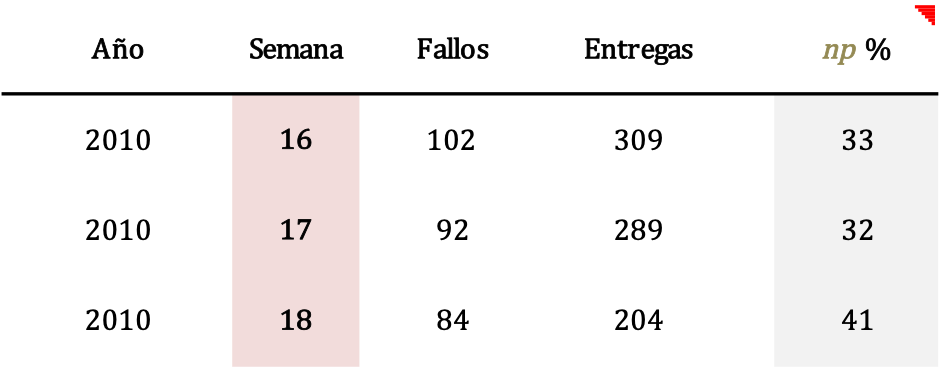 Table 1: Initial tuduc failure simple. |
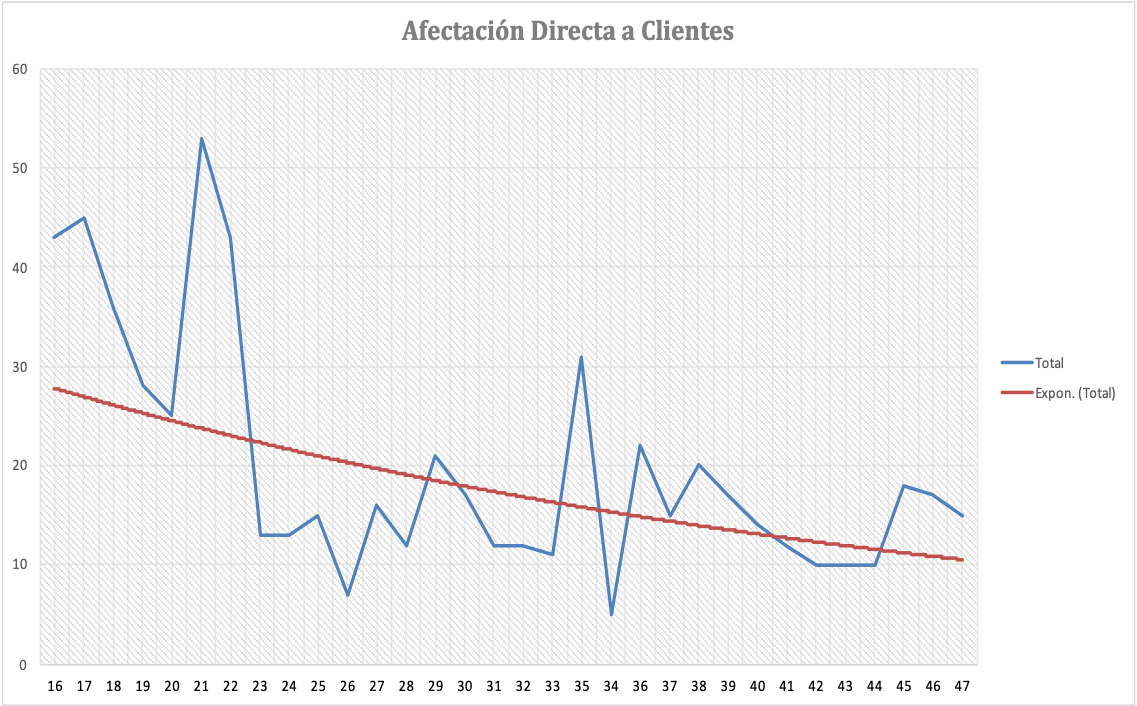 | |
By the end of 2020, it was achieved:
 [1] The data presented correspond to those establishments that have made a specific effort to ensure the quality of the data managed. It is necessary to maintain a constant focus on the reduction-elimination of failures in the home delivery service. Until an average of 5% (which would continue to be high) is achieved, this task must be prioritized in work schedules. In this regard, it is critical to ensure that attention is being paid to detecting and recording all failures that occur. |
The main difficulty in reducing failures lies in need to unify the different stalls' work dynamics in the market, whose particular habits are deeply rooted. Generating a group vision is the key to the process.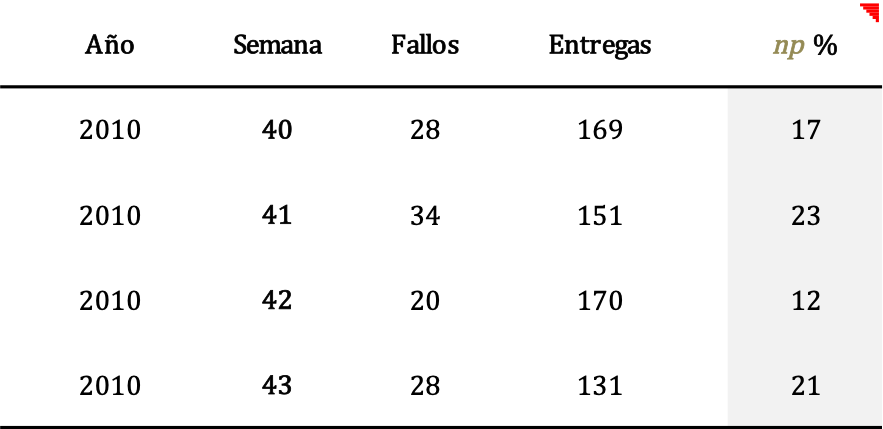 Table 2: Tuduc failures by the end of November 2020. |
| #16 Company Reference |
|---|
| La Rapita, Spain, 2019-Present Retail businesses 17 Establishments & 19 People involved |
| Abstract |
| Situation In 2019, the "Ràpita Prestigi" project begins with the impulse of the City Council and the aim of helping to improve the competitive capacity of Sant Carles de la Ràpita city's retail trade. The initial situation is not significantly different from that in other regions where syncplexity developed similar projects. In the first place, decision-making is poorly based on data and statistics. Secondly, emotional management is a totally foreign phenomenon for business as well as the use of the listening process in order to know the actual wishes of customers. None of the establishments participating in the project had considered developing a unique concept or specific added value of their business. Pricing criteria are not based on thorough and continuous cost control and benchmarking. To complete the picture, the need for a professional online sales culture is, at best, highly distorted. Mainly, work is not being done in the areas that online commerce demands in the current decade of the 21st century. Strategic Approach The initial approach of the project is to generate a deep awareness that business improvement requires a profound personal change. Without a new vision, the business can't evolve. In turn, the individual vision that limits the scope of our decisions can only change if our habits change. Thus, participants in the prestige-based competitiveness project are fully immersed in a serious culture of emotional management, which includes a thorough understanding of the listening process and the necessary personal change required both for its proper management and for superior insight in decision making. Positive thinking becomes the keystone of individual behavior. In parallel to personal development, processes and tools for analyzing financial balance, customer buying trends, and purchasing management are initiated. Product management has started to become more professional, generating a clear awareness of how much this facet affects the prosperity of the business. These new responsibilities exert considerable pressure on individual agendas, which specific work on time management addresses. Second Phase The second phase of the “Ràpita Prestigi” project starts again in 2020 with the support of the City Council. In this stage, particular emphasis is placed on consolidating the transformation initiated in the previous step. In addition to this necessary consolidation process, the work plan includes a specific focus on the next level of value-added generation, which in turn constitutes the primary axis of the new commercial promotion culture event-driven. The Prestige Behavioral Matrix continues to develop, facilitating the necessary individual change process ularly in innovation-related facets such as creativity. However, at the beginning of 2020, the COVID-19 pandemic broke out and hit most of the retail trade very hard; of course, this also affected the participants in the "Ràpita Prestigi" project. In these circumstances of confinements and restrictions of all kinds, the syncplexity model is tested to the limit. The necessary ingredients for the online business structure are not ready yet. On the other hand, consumer habits change drastically in a matter of a few days, which creates extraordinary emotional pressure on business owners. It is precisely in this context that the model is reinforced as a confidence generator for the businesses that are implementing it. One of the COVID pandemic consequences is that the work process has been altered substantially, which means that the second phase of the "Ràpita Prestigi" project could not be completed by the end of 2021. Key Results - After 24 months The results that demonstrate an evident ability to deal with critical situations can be appreciated by considering the following summary: |
| #17 Company Reference |
|---|
| Alcoi, Spain, 2019-Present Retail businesses; 48 Establishments & 106 People involved |
| Abstract |
| Situation In 2019, the "Alcoi Prestigi" project begins with the impulse of the City Council and the aim of helping to improve the competitive capacity of Alcoi city's retail trade. The initial situation is not significantly different from that in other regions where syncplexity developed similar projects. In the first place, decision-making is poorly based on data and statistics. Secondly, emotional management is a totally foreign phenomenon for business as well as the use of the listening process in order to know the actual wishes of customers. None of the establishments participating in the project had considered developing a unique concept or specific added value of their business. Pricing criteria are not based on thorough and continuous cost control and benchmarking. To complete the picture, the need for a professional online sales culture is, at best, highly distorted. Mainly, work is not being done in the areas that online commerce demands in the current decade of the 21st century. Strategic Approach The initial approach of the project is to generate a deep awareness that business improvement requires a profound personal change. Without a new vision, the business can't evolve. In turn, the individual vision that limits the scope of our decisions can only change if our habits change. Thus, participants in the prestige-based competitiveness project are fully immersed in a serious culture of emotional management, which includes a thorough understanding of the listening process and the necessary personal change required both for its proper management and for superior insight in decision making. Positive thinking becomes the keystone of individual behavior. In parallel to personal development, processes and tools for analyzing financial balance, customer buying trends, and purchasing management are initiated. Product management has started to become more professional, generating a clear awareness of how much this facet affects the prosperity of the business. These new responsibilities exert considerable pressure on individual agendas, which specific work on time management addresses. Second Phase The second phase of the “Alcoi Prestigi” project starts again in 2020 with the support of the City Council and, additionally, in collaboration with the Chamber of Commerce. In this stage, particular emphasis is placed on consolidating the transformation initiated in the previous step. In addition to this necessary consolidation process, the work plan includes a specific focus on the next level of value-added generation, which in turn constitutes the primary axis of the new commercial promotion culture event-driven. The Prestige Behavioral Matrix continues to develop, facilitating the necessary individual change process ularly in innovation-related facets such as creativity. However, at the beginning of 2020, the COVID-19 pandemic broke out and hit most of the retail trade very hard; of course, this also affected the participants in the "Alcoi Prestigi" project. In these circumstances of confinements and restrictions of all kinds, the syncplexity model is tested to the limit. The necessary ingredients for the online business structure are not ready yet. On the other hand, consumer habits change drastically in a matter of a few days, which creates extraordinary emotional pressure on business owners. It is precisely in this context that the model is reinforced as a confidence generator for the businesses that are implementing it. One of the COVID pandemic consequences is that the work process has been altered substantially, which means that the second phase of the "Alcoi Prestigi" project could not be completed by the end of 2021. Key Results - After 24 months The results that demonstrate an evident ability to deal with critical situations can be appreciated by considering the following summary: |
Get In Touch
Phone: +34 933 967 336
Address: Av. Diagonal #640, Planta 6, 08017, Barcelona, Spain.


